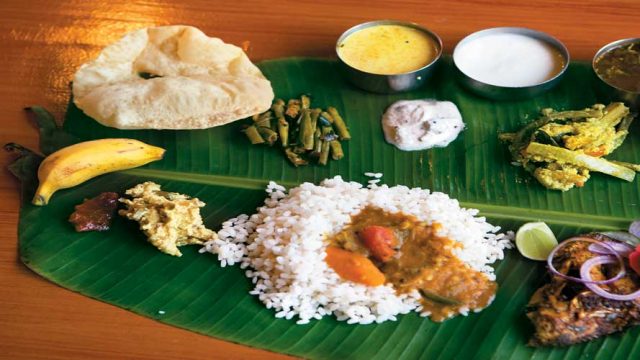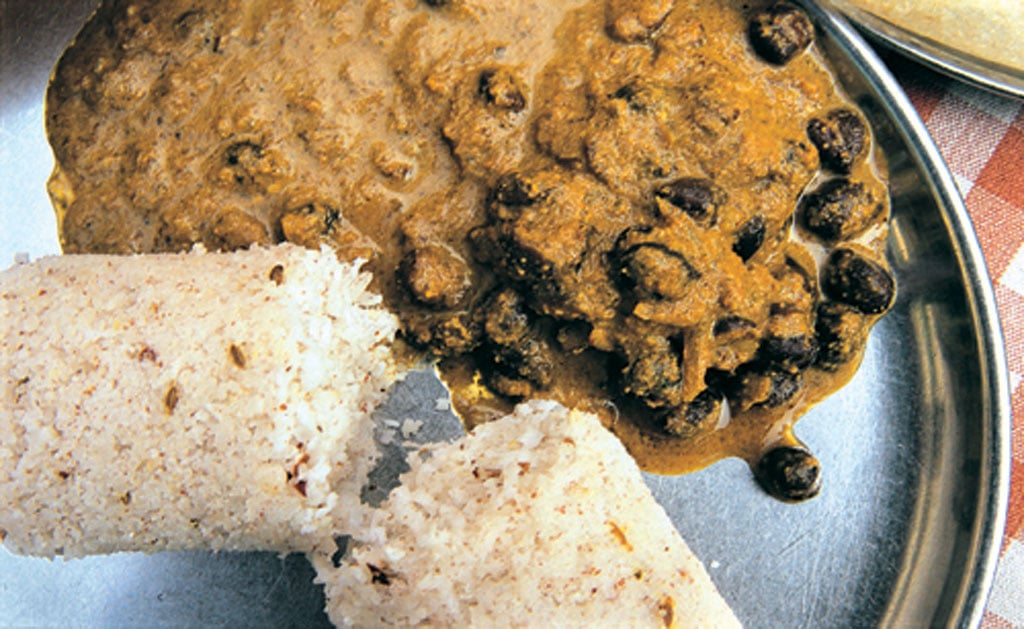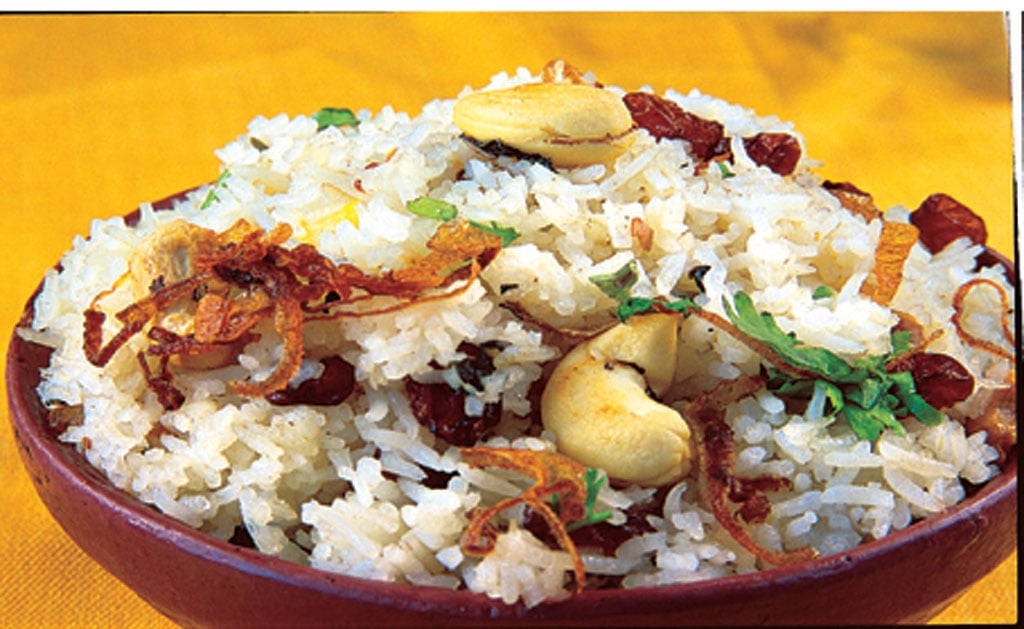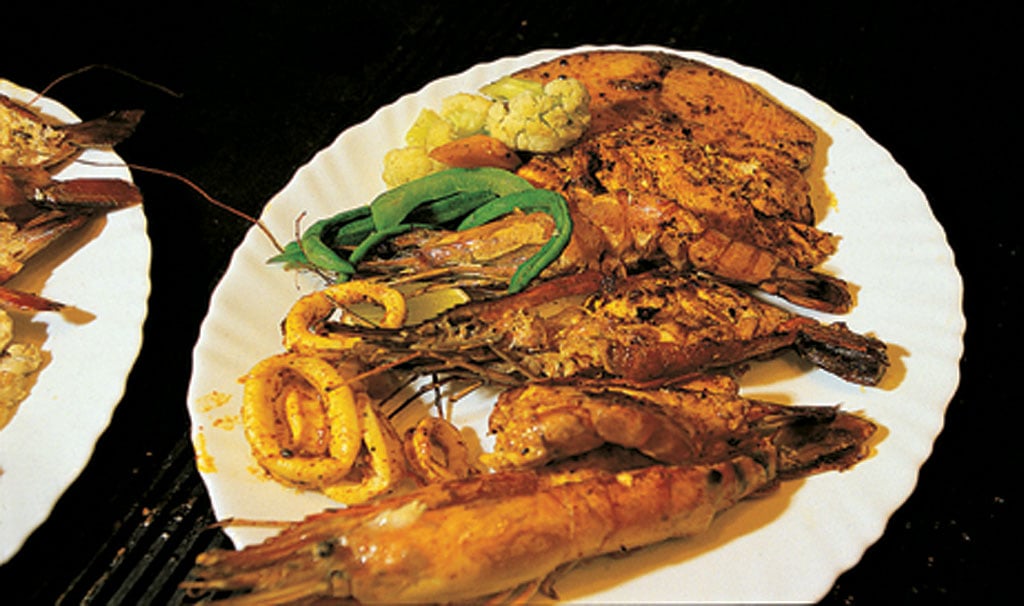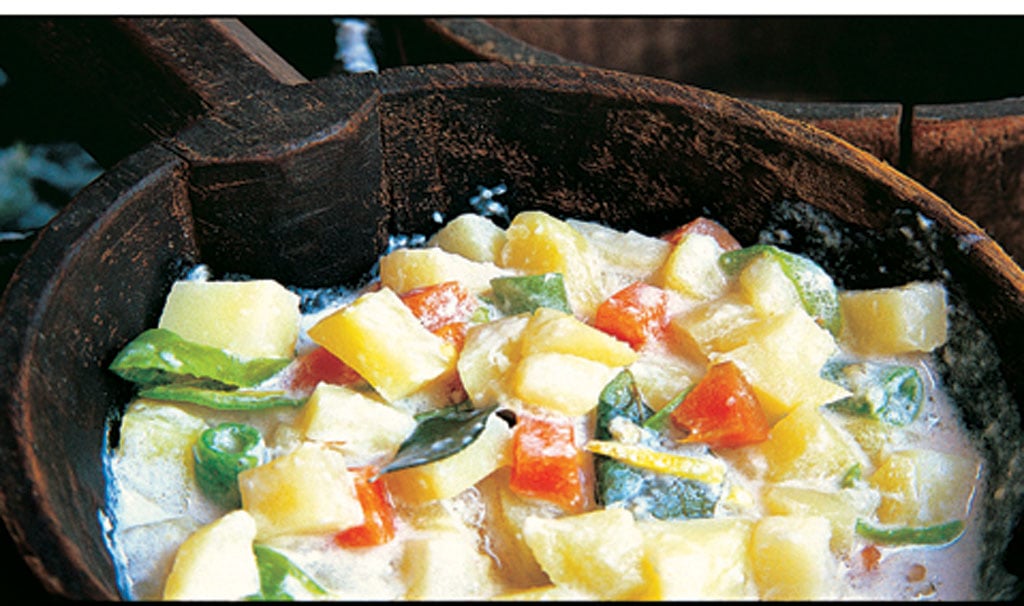For thousands of years, travellers arrived from various parts of the world to the coast of Kerala. The Greeks, the Arabs, the Romans, the Chinese, the Jews and after the arrival of Vasco da Gama, the Europeans. Given the various foreign influences, it would be natural to presume that the Malayali is a culinary mongrel and his cuisine a fusion of many cultures and palates. Strangely, people continue to cling to their distinctive traditions and insist that there is nothing as delicious as their version of Malayali food.
Flavour it right
There is no doubt that Kerala has several culinary traditions, both region and religion specific, But what makes Kerala cuisine distinct and different is its repertoire. It is rare to find a Malayali who is not motivated and inspired by culinary traditions. Naturally there is great emphasis laid on the ingredients used, the vessels food is cooked in and even the nature of fire used. In fact, in every home in Kerala and in the homes of Malayalis living elsewhere, one is sure to find a special place for some of the ingredients that go to make Kerala cuisine what it is. Ingredients that might make people from other culinary traditions balk and perhaps even shy away from Keralite cuisine, but to a Malayali, they represent pure magic. Coconut oil, coconut paste, mustard seeds, curry leaves, kokum or tamarind, seafood, and rice (the unpolished, large grained variety) all form an extremely intrinsic part of the Malayali palate.
Rice for every meal
The low-lying land, plentiful rainfall and several water ways made the land fertile enough to allow multiple crops of rice each year. It is interesting to note that the Keralites parboil their rice. Raw rice is placed in huge pans and boiled quickly, then removed and cooled. This technique rem oves only the tough outer layer of the grain, leaving all the important vitamins in it. Once dried, it can be kept and cooked like any other rice.
Rice constitutes the main part of all three meals in a Malayali’s home. Breakfast dishes include several ricebased dishes – the cylindrical puttu, the cakelike round spongy vattayappam, the crêpelike lacyedged vellappam, the pancakelike kallappam, and the noodlelike idiappam. Lunch features boiled rice while dinner includes the light and easily digested rice gruel. Interestingly, the word for rice in Malayalam is a synonym for food.
The coconut looms large
Next to rice, the chief ingredient is coconut. In how many different forms can a Malayali consume coconut? Ask and you will be surprised. As a thickener, as a paste to add flavour, as a condi ment when toasted, as a garnish in curries and soups, with vegetables, meat and seafood, as dessert and finally as oil to be consumed and applied on one’s hair and skin.
Beverages
Kerala has its own array of drinks. The Tamil Brahmins drink filter coffee, while the poor drink kattan-kapi or black coffee. It is the middle-class Malayali who shows a scant disregard for the business of coffee-brewing. The Malayali way of brewing coffee is to boil water, sugar and coffee and then add lots of milk. As if to compensate though, there is the chooku-kapi or dried ginger brew. If toddy and arrack constitute hard drinks, the soft one would be spiced buttermilk. Lime leaves, chopped green chillies and thinly sliced ginger are added to buttermilk along with salt to create a cooling drink for summer.
- Kadala curry with puttu
- Naichoru
The ‘ka in Kerala cooking
Then there are the vegetables. Can vegetables eaten in Kerala be any different from elsewhere? Beyond the ordinary line-up, there are some that seem to be indigenous to Kerala. There are certain tubers, for instance, that make their presence felt only during the end of the year. Strangely enough, they all seem to have names that begin with the Malayalam consonant ‘ka’. The tiny colocasia-like koorka, earthy and delicious; the more bland and well-sized thoppa kizhangu, the kavath, and the ubiquitous kappa or tapioca. Among these, it is the koorka that is highly prized and during the festival of Thiruvathira, all of them reign supreme along with the koova.

Besides vegetables, there is the one-of-a-kind cheena molagu. Literally it trans lates into Chinese pepper. The cheena molagu is all fire and flavour and demands a restraint and at the same time the gumption to make that leap of faith and introduce it into a dish at the right time in the right quantity. It takes a master to make the cheena molagu do its bidding.
Feasts for all occasions
While the sadyavattams (the traditional array of dishes – such as aviyal, olan, kootu curry, puliinji, kaalan – served at a Malayali feast) remain the same, there are certain dishes specific to a particular festival. Thiruvathira in late December–early January is when the koova is made. Yet another tuber, it is dried and powdered, and cooked over a slow fire with jaggery till it sets like halwa. And then there is the puzhukku – root vegetables and lentils boiled and flavoured with grated coconut.
- Tempting seafood platter
- Vegetable stew
If it is tubers that make Thiruvathira, the new year festival Vishu (in April) is a riot of jackfruit dishes such as elissery and upperi.
Banana republic
During Onam, the banana takes centrestage. Huge bunches are strung up on shop fronts. In homes, ripe bananas are boiled with a bit of jaggery to give it a pleasing sweetness.
Addicted to fish
With the variety of vegetarian dishes available, one would presume that this is largely a vege tarian state. However fish, or meen, appears on the tables of all but vegetarians in Kerala.
The long coastline and many inland waterways of Kerala make it a naturally fish-addicted state. At every waterfront location, fresh fish is available every day and away from the sea, the fishmonger, these days on a moped with a blue plastic box and hooter, is a common sight. In fact, in these inland areas, dried fish comes to the fore. Sole, shark and eel are some of the dried fish that are relished. Sea fish include the long silvery mackerel, pomfret, sardines, snapper and crustaceans. The prized fish is, of course, the much celebrated karimeen or the brackish freshwater fish – the pearlspot.
Then there is egg and poultry, mutton, beef and pork, each of which has its place in Keralite cuisine. Even though the same ingredients are used in dishes with these meats, each community within Kerala has its own unique way of combining them to create dishes that are vastly different from each other.
The Malabar Moplah manner
The northern part of Kerala is dominated by the Malayalamspeaking Moplah community, which has descended from marriages between Arab traders and local Keralite women. Though they have inte gra ted with the rest of Kerala, they still have unique traditions and nowhere is it more pro nounced than in their cuisine.
A dish such as alisa, a wheat and meat porridge has definite Arab antecedents while certain other dishes such as naichoru or ghee rice, or the flat bread made of rice called pathiri and the sweet mutta-mala or the egg garland made of the yolks of eggs without a trace of fat are all instantly recognised as Moplah dishes.
During the holy month of Ramzan, the day’s fast is broken at sunset with water and dry dates. After the prayers, pathiris with meat or chicken curry, followed by sweet and savoury snacks, are served.
A wedding calls for an elabrate display of fine Moplah cuisine. The night before the nikah, naichoru is served and for the wedding feast, there is the Moplah version of the biryani. The grains of rice lie supine and separate, plump and radiant with the contentment of having had their fill of fat and spices and meat juices. There are pieces of chicken or mutton or even beef. Topped with brown swirls of fried onion and raisins. And buried in the mound like a surprise, is a hard-boiled egg. This is accompanied by a date chutney, a raita and puffed golden papaddums.
While ice creams and fruit salads and even the payasams seem to have started appearing at Moplah wedding feasts, in traditional households, dessert is the very original and painstakingly created mutta-mala with the pinnathappam, a pudding made of egg whites and flavoured with cardamom. The meal is very often concluded with a suleimani (tea).
Traditions of central Kerala
Central and south Kerala is home to some of the finest dishes ever. In fact, one of Kerala’s best known combinations ‘appam and stew’ probably emerged from this region. Other delicacies of this province include the erachi olathiyathu (fried mutton, beef or pork), meen mulli gattathu (a fiery red fish curry), meen pollichathu (fish roasted in a plantain leaf), prawn mappas, peera patti chathu (a fish dish with grated coconut), duck roast and kozhi piralen (a fried chicken).
It is commonly perceived that the dishes prepared by Kerala’s Christian community is a cornucopia of nonvegetarian dishes. However, the community also makes a vast selection of teatime snacks. These range from avalos unda (a toasted rice and coconut powder ball) and achappam (rose cookies) to kuzhal appam (a cylindrical crisp cookie), ethekka appam (banana fritters) and vatteappam (a steamed rice and coconut pudding).
Serving a sadya
Until recent times, a wedding was gauged by not how much gold the bride was decked in or the weight of the gold embroidery on her sari. Instead it was the sadya, or the traditional big feast that was the measure of a wedding’s grandeur. Apart from the requisite dishes, what was crucial was the manner in which the sadya was served. An improperly laid ela (plantain leaf) was an indicator of a lack of breeding and uncouth manners.
The method of serving a sadya is strictly followed. First there is the business of the ela itself. The leaves to be eaten from are always the end section of the plantain leaf and must always be laid on the table with the narrow part of the leaf pointed to the left.
The food served begins from the bottom left half of the leaf on which is placed a small yellow plantain. Next to this will be jaggery-coated banana chips, salted banana chips and two kinds of papaddum, big and small. The lower right hand corner is for a spoon of parpu or plain coo ked lentils and a spot of ghee.

The top left half of the leaf is the section allocated to the lime curry, mango pickle, puli-inji and lime pickle. The remaining area of the top half of the leaf is studded with thoran (a dry mix of any vegetable with coconut), vegetable stew or olan (gourd is the main ingredient), kalan (a curry of yam and curd), avial (a thick mixture of vegetables in a coconut-based gravy), pachadi (raw mango and curd mixture), elisseri (a vegetable, mostly pump kin or green banana, lentil and coconut curry spiced with pepper and garnished with toasted coco nut flakes) and kuttu-kari.
Thereafter the rice is served at the bottom centre. The sambhar (a lentil-based gravy that came to Kerala from neighbouring Tamil Nadu and was adapted by the addition of roasted and ground coconut) is poured on the rice.
Only after all these are served does the person begin eating. Through the course of the meal, rasam (fiery pepper soup) is poured into cupped hands to be drunk and a little bit of curd is served to aid digestion.
The meal ends with payasam of two kinds, one jaggery and coconut-based, and the other milk-based, served onto the ela.




